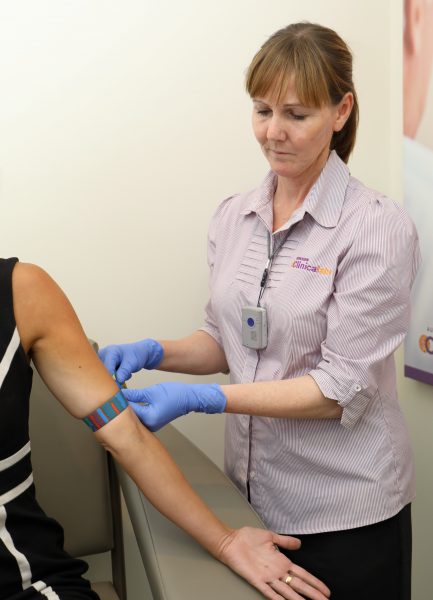Did you know that up to 95% of our healthcare workers have experienced verbal or physical assault? Similarly, according to the task force report, between 35 percent and 40 percent of psychologists in clinical practice are at risk of being assaulted by a patient at some time during their clinical careers.
Most assaults do not result in serious injury, but the emotional toll can be significant and can have a long-term impact on the mental health and wellbeing of the health worker themselves. In the same way, evidence gained by the Australia Bureau of Statistics suggests health professionals are at greater risk of experiencing anxiety, depression and suicide. Risk factors in the workplace include heavy workloads, long working hours, bullying, harassment, occupational violence and home-work stress.
Download Our Ultimate Guide To Duress Alarms
How to stay safe in practice
Mental health professionals in particular need to consider important safety factors when working with clients: their office layout, their initial visit procedures and their ability to handle a patient who’s become angry, agitated or violent.
Here are some valuable tips for maintaining a safer office and ensuring your safety isn’t compromised:
Screen potential clients
Conduct an initial assessment to determine every patient’s potential for . This is best done over via a tele-call session like zoom calling. This assessment will allow you to see whether the client is mentally and emotionally stable and what triggers they may have before you conduct a face to face in person appointment.
Screening questions might include:
- Do you have a history of physical violence?
- Do you think about hurting yourself or others?
- Would you be happy with giving me your local GP’s details prior to visiting me?
If you are concerned by the behavior of any person during a screening session trust your first impressions and don’t move forwards with seeing the client face to face, either turn the client away or tell them that all you can offer are appointments via tele call.
Lock the front door
Do not open the door unless a patient has an appointment. Send the patient a text message when it is time to enter the premise to meet with you/ or their therapist.
Install a camera and doorbell device at the front of the entrance; this is a great tool for screening patients before they enter the premise. This will also allow you an insight into both their mental and emotional wellbeing before letting them inside the office.
Develop an office evacuation drill
Establish a plan of attack and practice it with your staff in case a patient does become violent.
Ask patients to leave their belongings at home or in their car
Ask patients leave their large bags & belongings at home. If they happen to bring them into the practice ask them to leave their belongings with reception or outside the appointment room.
Position yourself close to the exit
Keep yourself closer to the door, so you can quickly exit if need be and don’t block the exit.
Tell your colleagues to enter your therapy session
Give your colleagues permission to “pop in” on a session where a patient might be edging towards becoming violent. A patient can quickly become agitated and “revved up,” the presence of another person sometimes helps calm a potential escalation and incident.
Remove potential weapons
Don’t have anything within sight or reach of your clients that could be used as a weapon, like scissors or even a stapler.
Make an excuse for leaving the room
Should a client not calm down and is quickly becoming violent, get out of the room by saying you need to use the bathroom or that you need to visit a colleague.
Avoid working alone
If you work with others try not to see patients when no one else is in the office. As always, when you’re working with a patient who is known to become violent, make sure someone else is in the office.
We do know many therapists do work alone, where possible don’t work alone in the evening but if you do have to work outside of normal working hours make sure someone always knows your work schedule and whereabouts.
Purchase a duress lone worker safety alarm
MePACS understands that worker safety should be the number one priority for all mental health employers. It is ultimately the duty of care for all employers to ensure their staff have the confidence to do their job to the best of their ability, feel safe and have the support they require whilst at work.
- 80% of clients with a MePACS duress alarm said they feel safer at work.
- Over 90% of MePACS Duress clients say they feel more supported by their organisation by offering them a duress alarm.
Download Our Ultimate Guide To Duress Alarms

Introducing a MePACS duress alarm into a mental health practice can guarantee that all healthcare staff, and particularly those in allied health roles, have the ability to contact emergency assistance should it be required
MePACS offer 24/7 emergency response any time day or night by trained professionals so in the event of an accident, violence, assault, fire or medical emergency once the alarm is pressed MePACS will contact the user within 2-minutes to ascertain what help you need and call either a manager or emergency services.
Sarah is an Allied Health worker and she needed to press her MePACS duress alarm when a client quickly became agitated and it turned into an emergency situation “When I pressed my MePACS alarm, it de-escalated the situation and the patient ran out of the building, then I locked the door to keep myself safe.”
“Having pressed my MePACS alarm, it gave me reassurance to know that I could come back into work the next day.”
